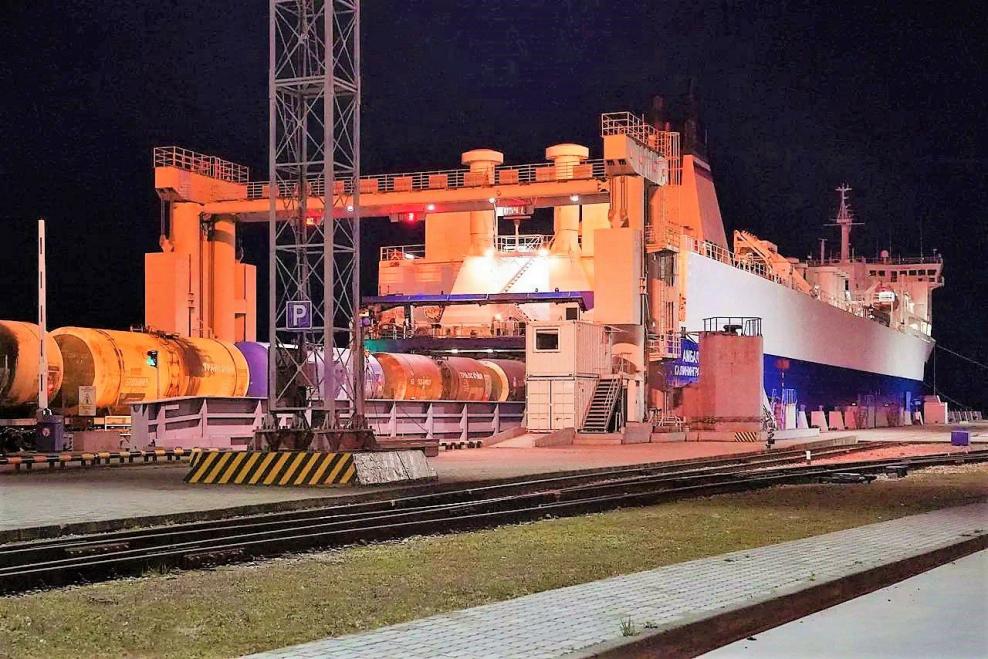Grain and mineral fertilizers volume increased noticeably, while handling of ore and oil products decreased

Cargo traffic at Russian seaports in January-October 2023 increased by 7.8% on the same period in 2022 to 749.3 million tonnes. Handling of dry bulk cargo increased to 382 million tonnes (+14.7%), including coal: 177.6 million tonnes (+3.8%), grain: 61.7 million tonnes (a 1.8 times growth), cargo in containers: 41.3 million tonnes (+9.1%), mineral fertilizers: 30.1 million tonnes (a 1.6 times gain), ferrous metals: 18.2 million tonnes (-14.8%), ores: 8.3 million tonnes (-25.2%), and ferry cargo: 6.8 million tonnes (+25.8%), the Association of Russian Commercial Sea Ports (ASOP) statistics showed.
Handling in the segment of liquid bulk reached 367.3 million tonnes (+1.5%), including crude oil: 228.3 million tonnes (+7%), oil products: 103.2 million tonnes (-9.6%), liquefied gas: 28 million tonnes (-4.1%), and food cargo: 4.7 million tonnes (+30%).
The ten-month volume of exports totaled 585.4 million tonnes (+5.9%), imports: 32.3 million tonnes (+8.5%), transit cargo: 55.1 million tonnes (+13.5%), short sea traffic: 76.5 million tonnes (+19.9%).
In the reporting period the Arctic basin seaports handled 81.8 million tonnes of different cargoes (-0.2%), including dry bulk cargo: 26.2 million tonnes (+7.7%), liquid bulk cargo: 55.6 million tonnes (-3.5%). The ports of Murmansk cargo volume reached 48.7 million tonnes (+4.5%), of Sabetta: 22.9 million tonnes (-3.3%), Varandey: 4.4 million tonnes (-11.1%) and Arkhangelsk: 1.6 million tonnes (-21.7%).
The Baltic basin seaports volume: 208.8 million tonnes (+2.5%), including dry bulk cargo: 94.8 million tonnes (+19%), liquid bulk cargo: 114 million tonnes (-8%). Cargo traffic at the ports of Ust-Luga declined 5.3% to 96 million tonnes, while Primorsk handled 52.6 million tonnes (+9.2%). Great Port of St. Petersburg saw a 23.5% volume growth to 40.2 million tonnes. Port Vysotsk: 11 million tonnes (-18%).
Handling of cargo at the seaports of the Azov-Black Sea basin in Jan-Oct totaled 251.3 million tonnes (+17.2%). Dry bulk cargo: 122.9 million tonnes (+26.2%), liquid bulk cargo: 128.4 million tonnes (+9.8%). Cargo volume at the ports of Novorossiysk reached 136.7 million tonnes (+13.7%), Taman: 35.6 million tonnes (+1.7%), Tuapse: 21.6 million tonnes (+22.8%), Port Kavkaz: 19.1 million tonnes (+42.7%), Rostov-on-Don: 14.3 million tonnes (+16.8%).
Throughput at seaports in the Caspian Basin dropped 36.1% to 6.5 million tonnes. There was a 1.6 times growth in dry bulk segment to 4 million tonnes. Liquid bulk cargo: 2.5 million tonnes (+4.9%). The ten-month volume at the Port of Astrakhan increased to 3.1 million tonnes (+1.6 times), the Port of Makhachkala handled 2.9 million tonnes (+22.7%).
Cargo traffic at the Far Eastern basin seaports amounted to 200.9 million tonnes (+5.7%), including dry bulk: 134.1 million tonnes (+3.9%), liquid bulk cargo: 66.8 million tonnes (+9 .6%). Vostochny ports throughput rose to 72.2 million tonnes (+5.3%), Port Vanino: 30.1 million tonnes (-3.9%), Port of Vladivostok: 28.1 million tonnes (+4.8%), Port of Nakhodka: 23 million tonnes (+5.9%), Prigorodnoye port: 11 million tonnes (-13.9%).
Almost 43 000 passenger ship calls (-21.5%) were handled at the country’s seaports and 2.8 million people (-17.3%) were served at marine passenger terminals. The number of departing and arriving passengers was nearly equal – 1.4 million people), while the number of departing passengers fell by 2.2 times, and that of arriving passengers increased by 4 times. There were no transit passengers in the reporting period.
The main number of passengers was served at dedicated passenger terminals in the seaports of Sevastopol: 2.28 million people (-15.7%), Yalta: 196 800 people (a 2.3 times decline), Sochi: 264 000 (+33%).



